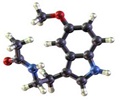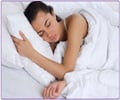For most children and teens, the beginning of a new school year is just around the corner. Not only will they be hitting the books again after a three-month-long summer break, but many of them will also participate in after-school activities.
More research is emerging that sheds light on a serious problem affecting student-athletes nationwide: the number of children and teens who are considered obese is rising dramatically. According to the American Academy of Sleep Medicine (AASM), obesity raises the risk of cardiovascular disease and other health problems, and also increases the likelihood of developing obstructive sleep apnea (OSA).William Kohler, MD, medical director of the Florida Sleep Institute in Spring Hill, director of pediatric sleep services at University Community Hospital in Tampa, and an AASM pediatric sleep expert, warns that the health problems brought on by obesity, such as OSA, should serve as a wake-up call to not only student-athletes and their parents, but also to their instructors and coaching staff.
“OSA can increase the risk for stroke, diabetes and cardiovascular disease,” says Dr. Kohler. “When the child or teen puts on weight, the throat can narrow, and anything which narrows the posterior pharynx can lead to the development of OSA. OSA is a serious disorder that can be harmful, or even fatal, if it is not recognized and treated.”
OSA causes a child or teen to stop breathing during sleep and can disturb his or her sleep several times on any given night, resulting in daytime sleepiness. Children or teens who are chronically tired may have cognitive, attention or behavioral problems, whether in the classroom or on the playing field, says Dr. Kohler, adding that they may be irritable or cranky or have ADHD.
Dr. Kohler notes that OSA symptoms may prevent a student-athlete from participating in a critical game or deter the ability to perform well in individual or head-to-head competition. In addition, OSA can lead to poor academic achievement, which can make a student ineligible to compete in after-school activities, says Dr. Kohler.
“Parents need to watch for signs of OSA such as snoring, morning headache, morning dry mouth and excessive tiredness,” warns Dr. Kohler. “It is important for the parents of a child or a teen who may have OSA to consult with a sleep specialist, who can evaluate, diagnose, treat and manage OSA or any other kind of sleep disorder.”
Advertisement
Several studies that outline the adverse effects of OSA and other sleep problems among children and teens with regards to their athletic and academic performance were presented at SLEEP 2007, the 21st Annual Meeting of the Associated Professional Sleep Societies, this past June:
Advertisement
Research examining the impact of sleep in children and teens suggests that even mild sleep loss produces marked deficits in their ability to comprehend and disseminate the information critical to their success in school or as a participant in a sporting event. Aggressive behavior and bullying, common among schoolchildren, are likely to have multiple causes, one of which may be an undiagnosed sleep-related breathing disorder.
Over the past decade, children and teens have been going to bed later and sleeping less. This can be attributed, in part, to a lack of awareness in the community concerning sleep need in children and teens and how the amount of sleep a child should get each night is dependent on one’s age. The Sleep-Side Rule is found to be an effective tool that improves their understanding of the relationship between age and sleep need.
The prevalence of children and teens with OSA, as well as the negative consequences of living with OSA, have also been highlighted in several studies published in issues of SLEEP and the Journal of Clinical Sleep Medicine. The adverse effects of OSA made headlines last year, when OSA was established as a contributing cause in the death of Reggie White, a defensive end for the Philadelphia Eagles and Green Bay Packers, at the age of 43. The AASM stresses that early detection and treatment for OSA is the best way for children and teens to avoid the same fate.
On behalf of the AASM, Dr. Kohler offers the following tips for children and teens on how to get a good night’s sleep: Follow a consistent bedtime routine.
Establish a relaxing setting at bedtime.
Get a full night’s sleep every night.
Avoid foods or drinks that contain caffeine, as well as any medicine that has a stimulant, prior to bedtime.
Do not stay up all hours of the night to “cram” for an exam, do homework, etc. If after-school activities are proving to be too time-consuming, consider cutting back on these activities.
Do not go to bed hungry, but don’t eat a big meal before bedtime either.
Avoid any rigorous exercise within six hours of your bedtime.
Make your bedroom quiet, dark and a little bit cool. Also, keep computers and TVs out of the bedroom.
Get up at the same time every morning.
Source-Eurekalert
LIN/B











